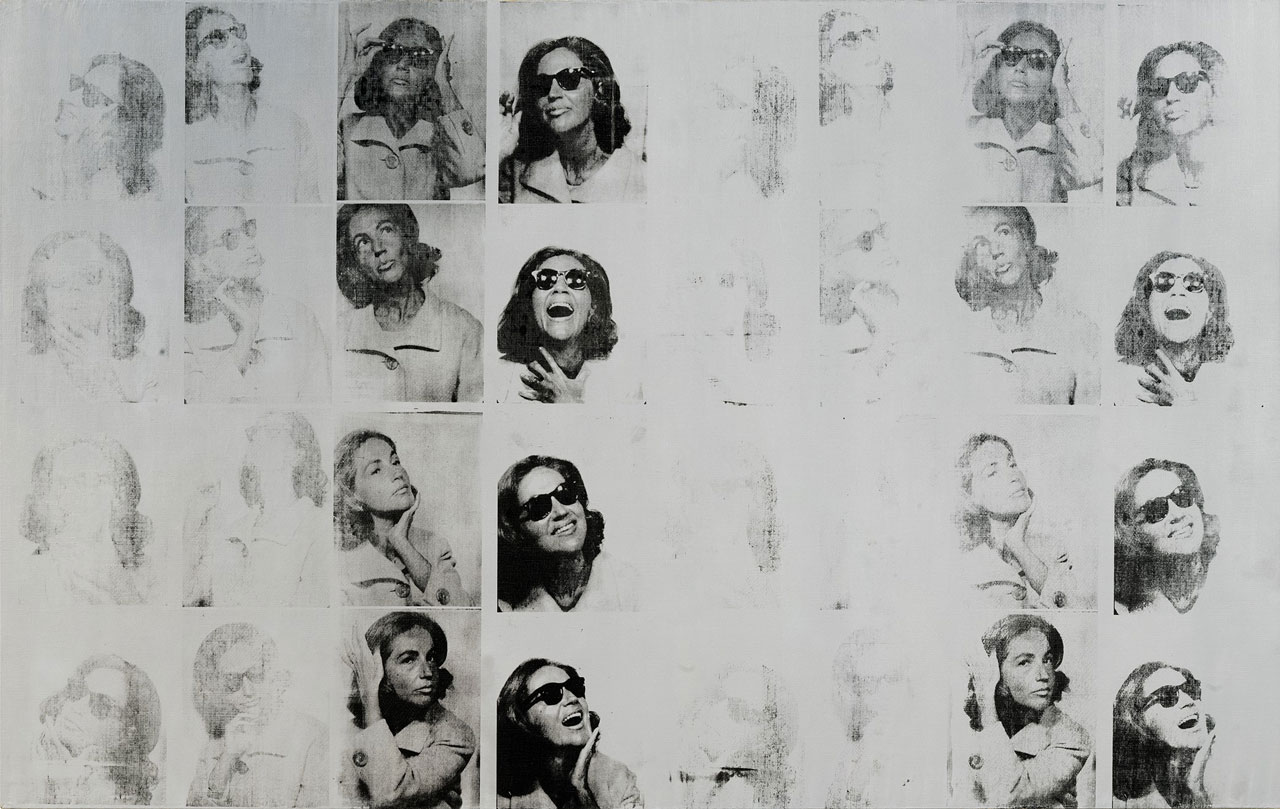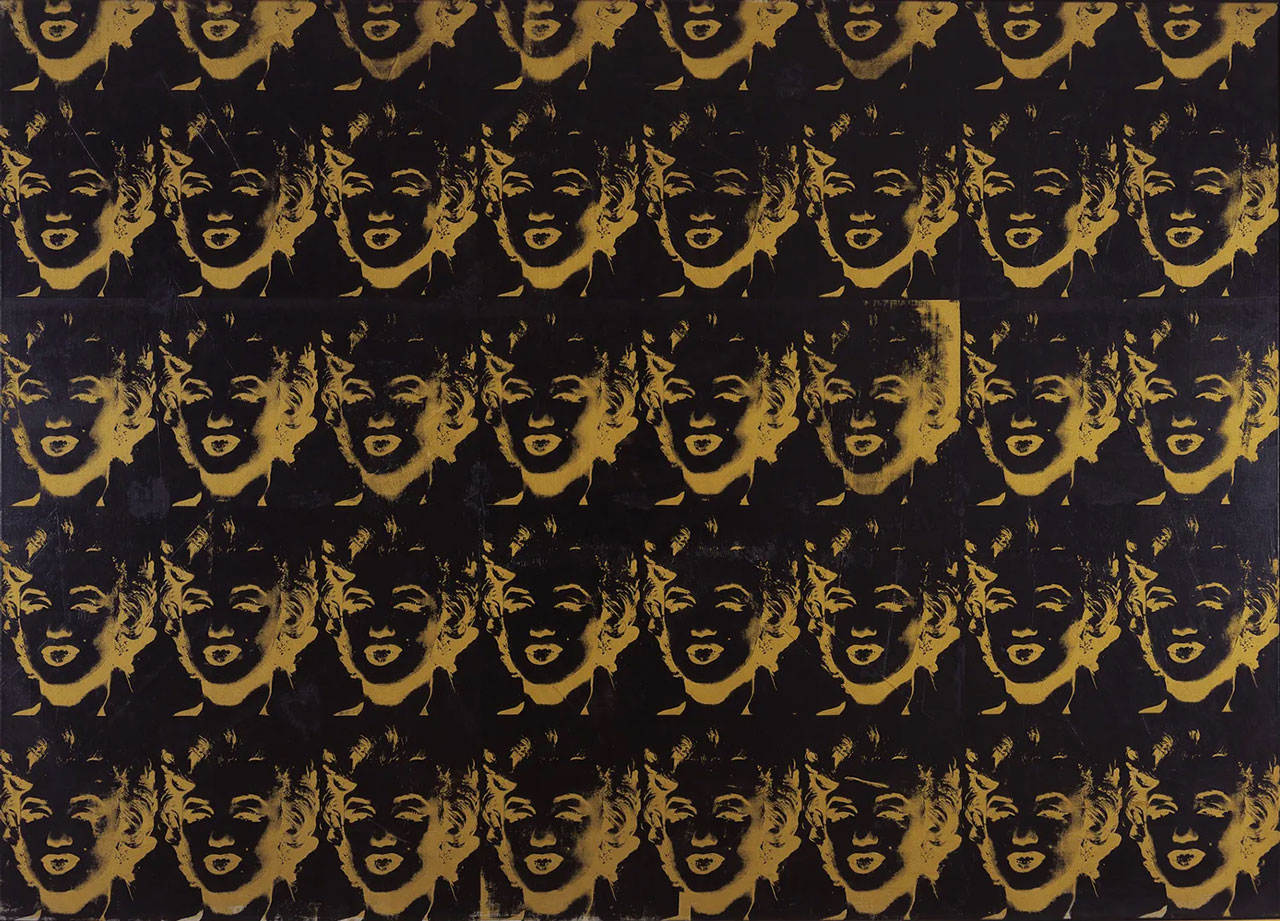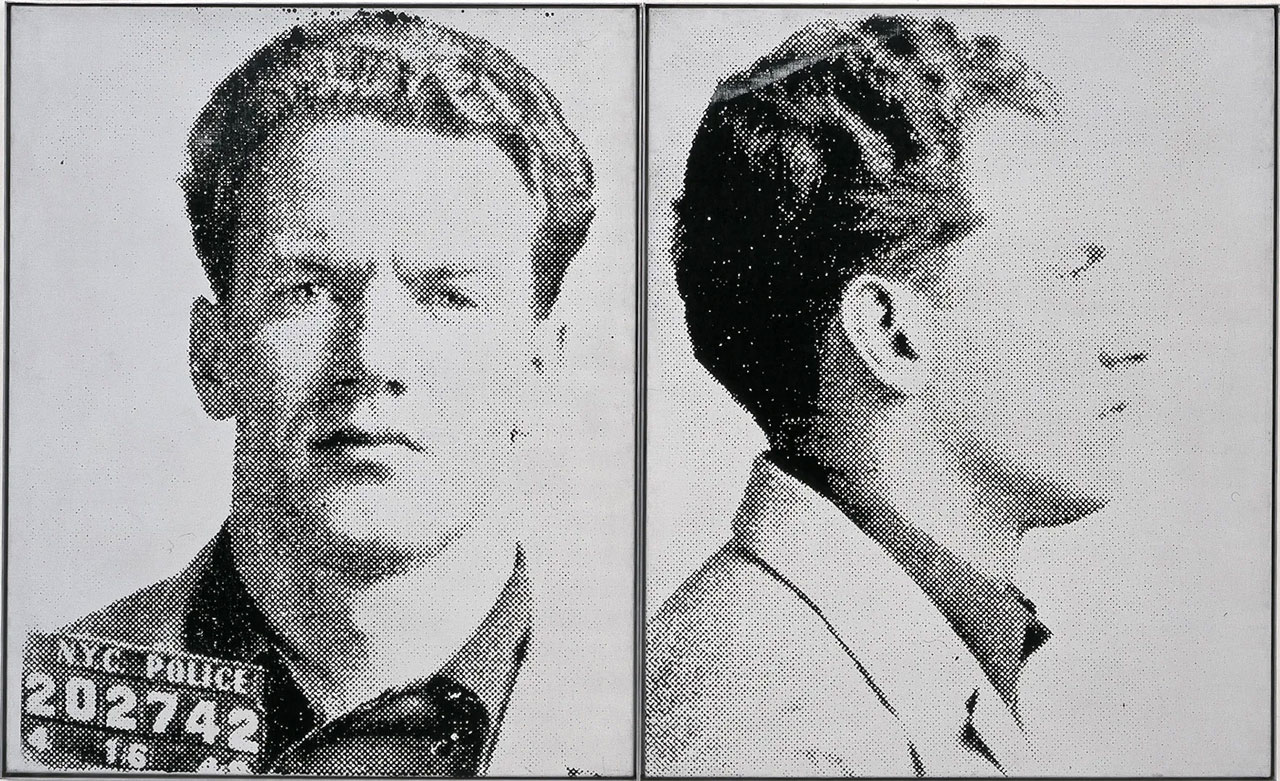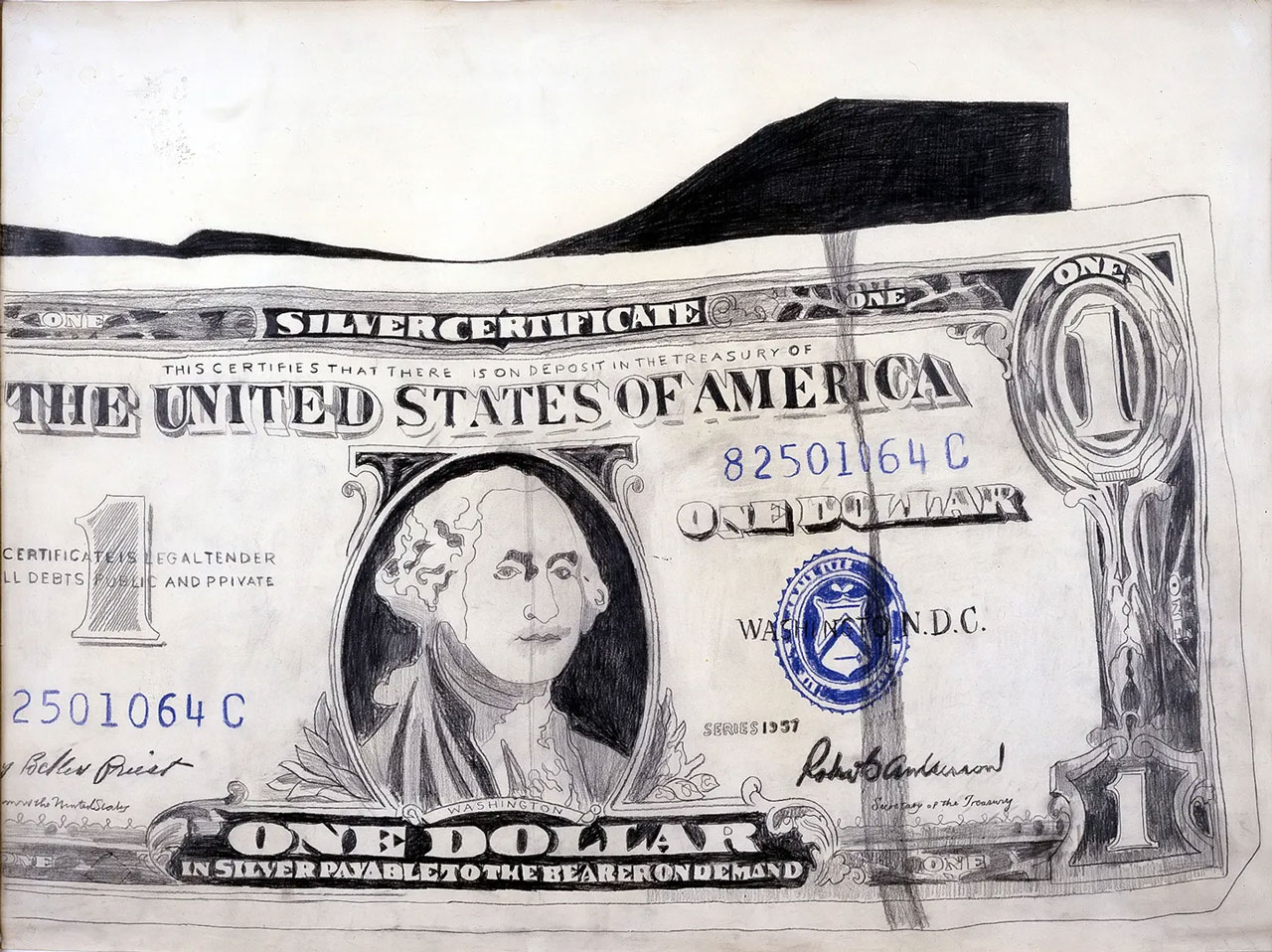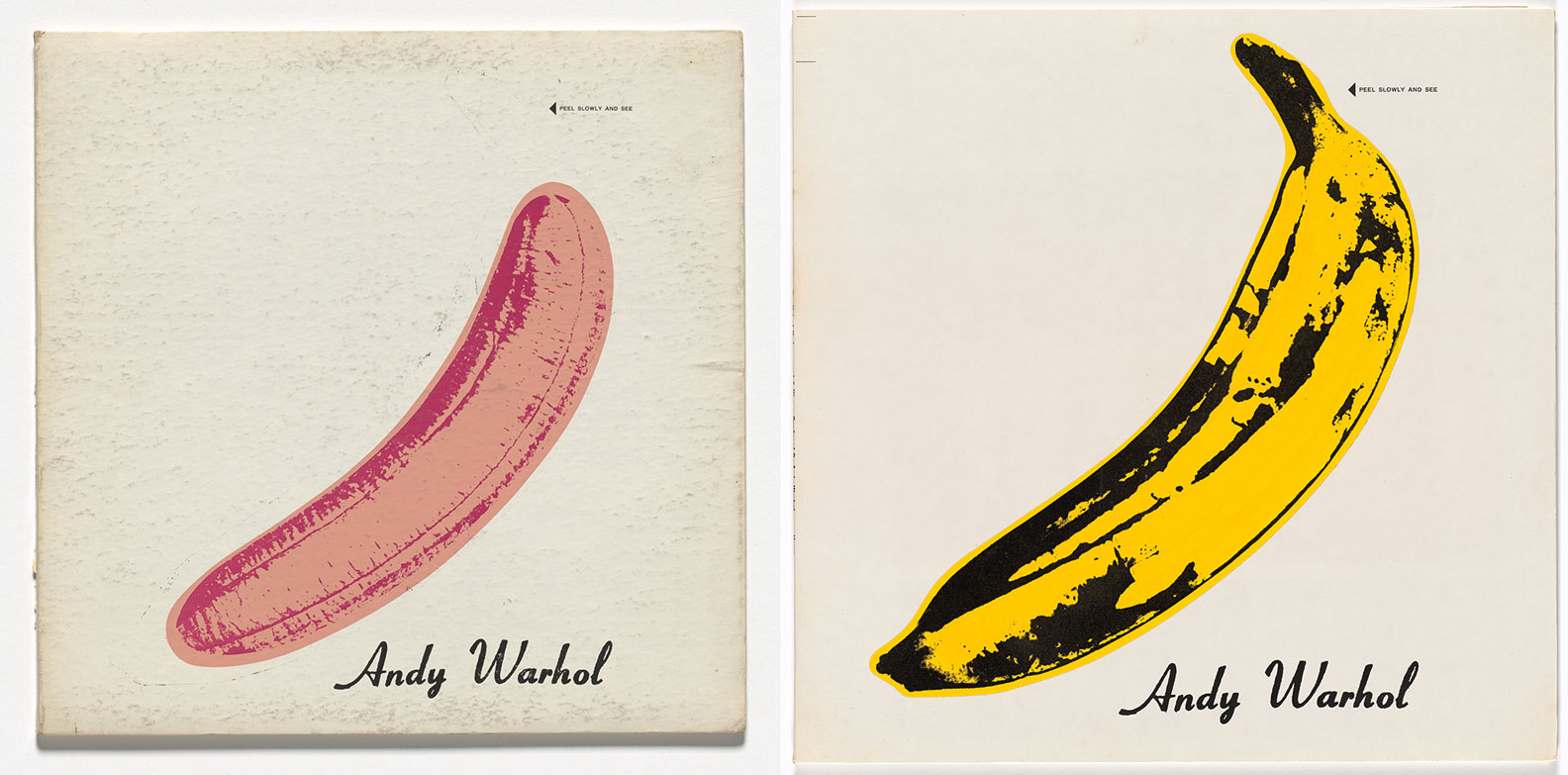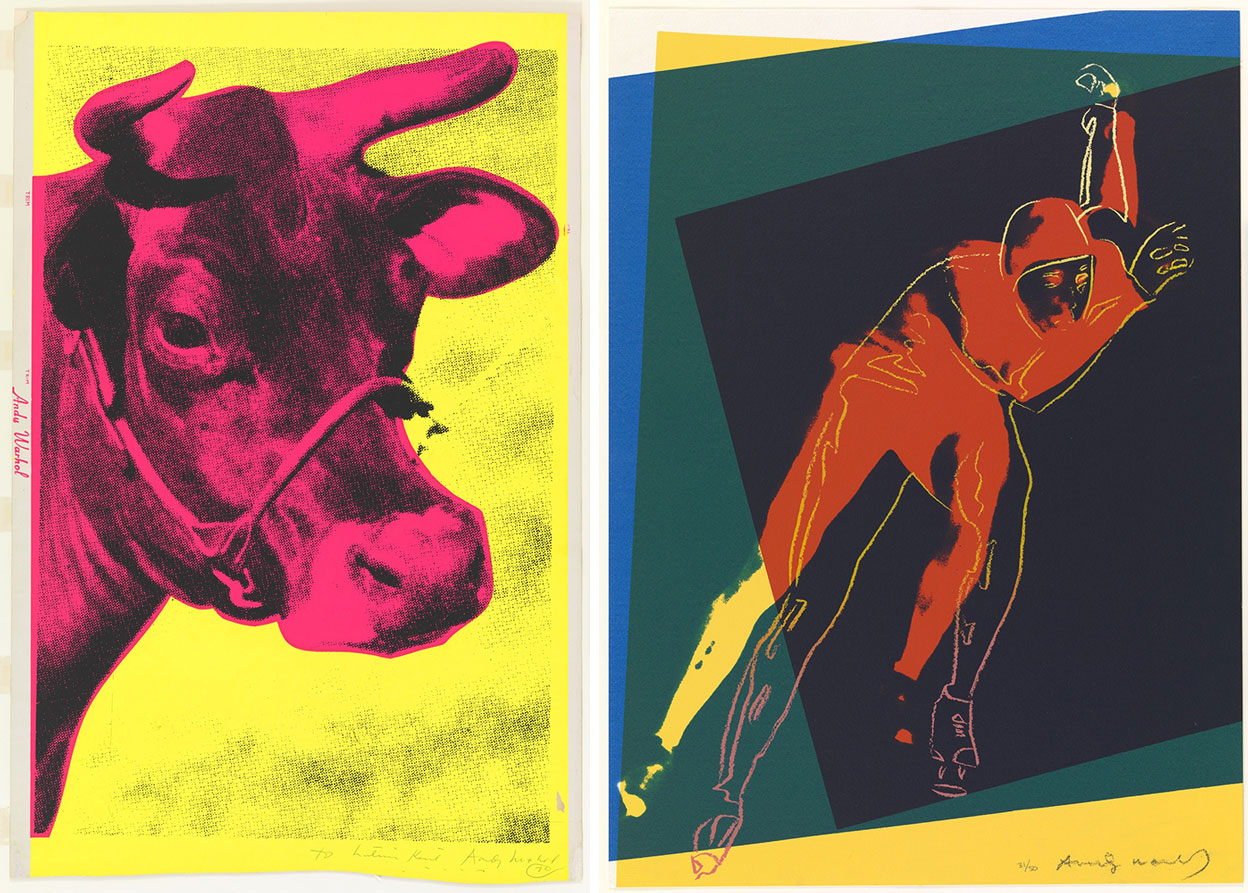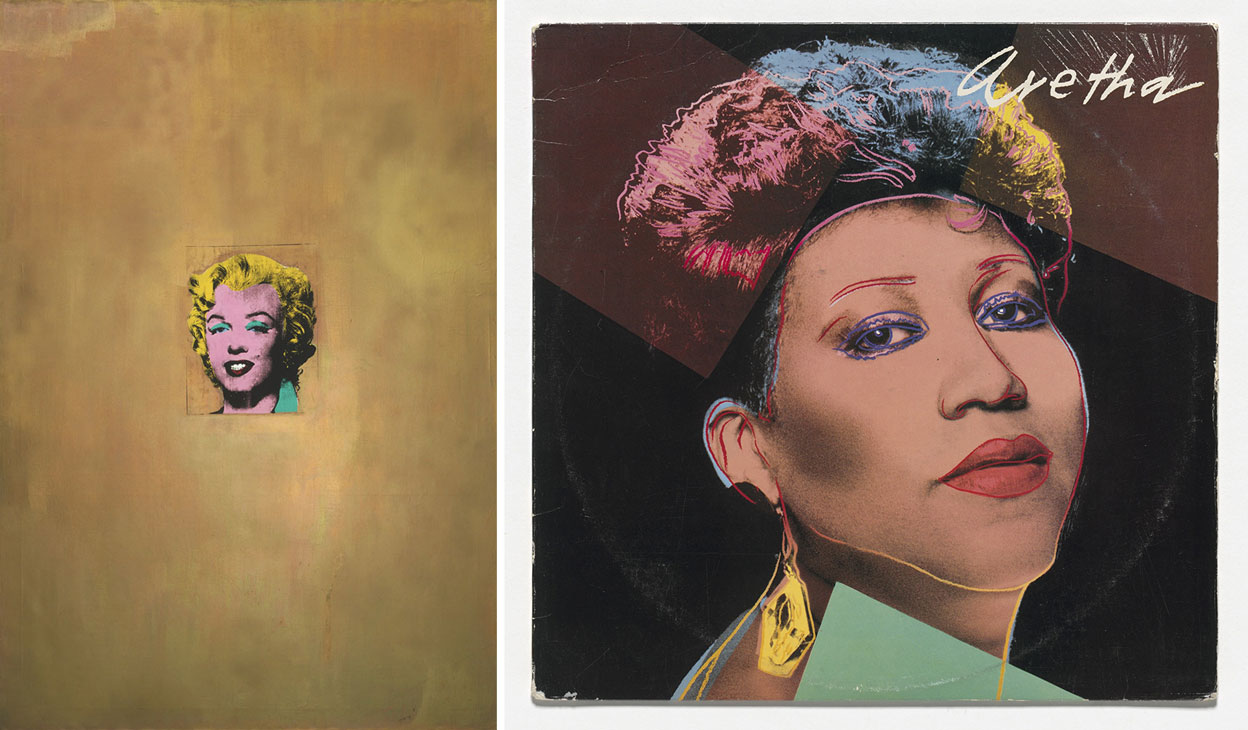TRACES: Andy Warhol
 Today is the occasion to bear in mind Andy Warhol (6/8/1928-22/2/1987). One of the most influential artists of the second half of the 20th Century, creating some of the most recognizable images ever produced. Challenging the idealist visions and personal emotions conveyed by abstraction, Warhol embraced popular culture and commercial processes to produce work that appealed to the general public. Through documents or interviews, starting with: moments and memories, we reveal out from the past unknown sides of big personalities, who left their indelible traces in time and history.
Today is the occasion to bear in mind Andy Warhol (6/8/1928-22/2/1987). One of the most influential artists of the second half of the 20th Century, creating some of the most recognizable images ever produced. Challenging the idealist visions and personal emotions conveyed by abstraction, Warhol embraced popular culture and commercial processes to produce work that appealed to the general public. Through documents or interviews, starting with: moments and memories, we reveal out from the past unknown sides of big personalities, who left their indelible traces in time and history.
By Efi Michalarou
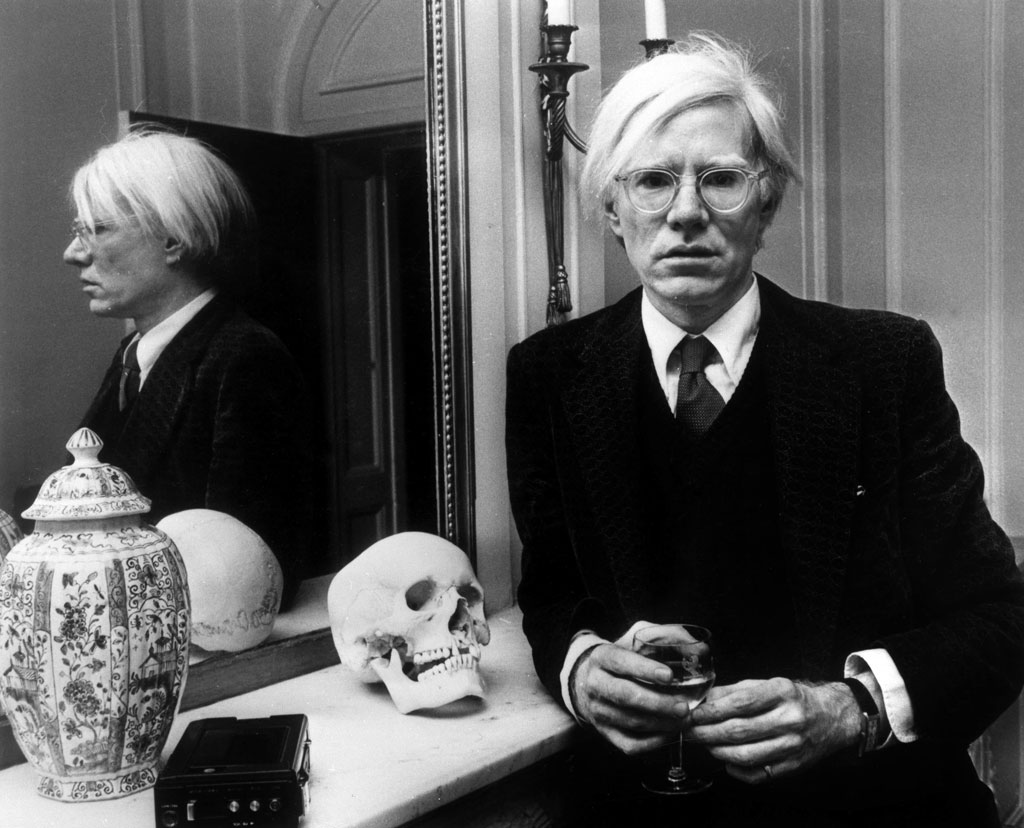 There has for years been quite a bit of confusion to where and when Andy Warhol was born, but according to Andy’s two older brothers and the birth certificate that was filed in Pittsburgh in 1945, he was born on August 6th in Pittsburgh. Whether or not this is the day he was born hasn’t been proved, but it was on this date he would celebrate his birthday. He is considered a founder and major figure of the Pop Art movement. A graduate of the Carnegie Institute of Technology in 1949, he moved to New York City and gained success as a commercial artist. He got his first break in August 1949, when Glamour Magazine wanted him to illustrate a feature entitled “Success is a Job in New York”. But by accident the credit read “Drawings by Andy Warhol” and that’s how Andy dropped the “a” in his last name. He continued doing ads and illustrations and by 1955 he was the most successful and imitated commercial artist in New York. In 1960 he produced the first of his paintings depicting enlarged comic strip images initially for use in a window display. Warhol pioneered the development of the process whereby an enlarged photographic image is transferred to a silk screen that is then placed on a canvas and inked from the back. Each Warhol silkscreen used this technique that enabled him to produce the series of mass-media images – repetitive, yet with slight variations – that he began in 1962. These iconic Andy Warhol prints, incorporating such items as Campbell’s Soup cans, dollar bills, Coca-Cola bottles, and the faces of celebrities, can be taken as comments on the banality, harshness, and ambiguity of American culture. Later in the 1960s, Warhol made a series of experimental films dealing with such ideas as time, boredom, and repetition; they include “Sleep” (1963), “Empire” (1964), and “The Chelsea Girls” (1966). He created approximately 600 films between 1963 and 1976, ranging in length from a few minutes to 24 hours. In 1965 he started working with the rock band “The Velvet Underground” formed by Lou Reed and John Cale. Andy introduced them to the model and moviestar Nico and she sang on their debut album from 1967 “The Velvet Underground and Nico”. Andy would travel around the country, not only with The Velvets, but also with superstar of the year Edie Sedgwick and the lightshow “The Exploding Plastic Inevitable”. On 3/6/1968, Valerie Solanis, a rejected superstar, came into The Factory and shot Andy three times in the chest. He was rushed to hospital where he was pronounced dead, but after having his chest cut up and been given heart massage, he survived. Valerie Solanis turned herself in that night and was put in a mental institution. She was later given a three year prison sentence. After recovering Andy Warhol continued to work. He founded inter/VIEW magazine in 1969 (they changed the name to Interview in 1971), published “The Philosophy of Andy Warhol: From A to B and Back Again” in 1975 and continued to paint portraits until his death in 1987. In the 1960s, Warhol began his most prolific period as an artist. He had already begun making a name for himself in the commercial art world, yet he desired to known as a fine artist as well. He began converting the themes of advertisements into large-scale graphic canvases. To make his large-scale graphic canvases, Warhol projected an enlarged image onto a canvas on the wall. He would subsequently work freehand, without a pencil, rendering a painterly result. In order to develop his own niche in painting, his friends suggested he paint the things he loved the most. The result was the iconic “Campbell’s Soup Cans” (1962.) Warhol said of Campbell’s Soup “I used to drink it. I used to have the same lunch every day, for 20 years, I guess, the same thing over and over again”. Though the works resemble mass-produced advertisements, they were painted by projecting the images onto a canvas and stenciled afterwards. This way, Warhol removes evidence of an artist’s hand. Though best known for his silkscreens and paintings, Warhol became a passionate photographer later in his life. He carried a camera with him at all times, capturing everything from personal friends to iconic celebrities. The photographs signified his apathy towards social hierarchy and also ranged from black and white 35 mm portraits to Polaroid shots. He approached photography in two ways. In one instance, he created over 500 ‘stitched’ photographs which feature identical images sewn together in a grid form. This was a clear demonstration of his interest in repeated imagery. In another instance, he would only choose a single photo from a set to become a print. The singularity of these works shows a clear separation from Warhol’s typical themes of mass production and repetition. Therefore, photography provided Warhol opportunities to showcase both his private self and his public artistic identity. Of his silkscreens, Warhol has said “the reason I’m painting this way is that I want to be a machine, and I feel that whatever I do and do machine-like is what I want to do”. Indeed, machine-like precision and mimicry appear repeatedly in works of this medium. The screenprinting process was a variation of stenciling. Warhol had a streamlined process in producing silk screen prints. First, he laid a photograph on to the mesh of a silk screen. Afterwards, he passed an ink-covered squeegee over the mesh. The ink would pass through the mesh and impress a print of the image onto the canvas underneath. The choice of ink depended on the intended composition of the final product. Warhol was able to apply multiple colors to create a layering effect, thus a different color composition could be made each time. He used a variety of canvases and papers. Warhol’s best known silk screen prints include his iconic portfolio of Marilyn Monroeand Elizabeth Taylor. Producing art in a systematic manner similar to an assembly line, Warhol gave rise to series or portfolios of his beloved celebrities. Even today, these massively recognizable images serve as a beacon of popular culture. Warhol’s range as an artist certainly shows in his sculptures and installations. Similar to his other works, his sculptures replicated commercial symbols and ideologies. Of this medium the best known were the series of “grocery carton” works which replicated Heinz Ketchup and Campbell’s tomato juice cans. His best known sculpture from this series is probably his “Brillo Boxes” (1964). As the name suggests, Warhol applied silkscreened logos of the consumer product onto plywood boxes. The resulting appearance was identical to the logoed boxes often see in supermarkets. These sculptures were first exhibited at the Stable Gallery in 1964.
There has for years been quite a bit of confusion to where and when Andy Warhol was born, but according to Andy’s two older brothers and the birth certificate that was filed in Pittsburgh in 1945, he was born on August 6th in Pittsburgh. Whether or not this is the day he was born hasn’t been proved, but it was on this date he would celebrate his birthday. He is considered a founder and major figure of the Pop Art movement. A graduate of the Carnegie Institute of Technology in 1949, he moved to New York City and gained success as a commercial artist. He got his first break in August 1949, when Glamour Magazine wanted him to illustrate a feature entitled “Success is a Job in New York”. But by accident the credit read “Drawings by Andy Warhol” and that’s how Andy dropped the “a” in his last name. He continued doing ads and illustrations and by 1955 he was the most successful and imitated commercial artist in New York. In 1960 he produced the first of his paintings depicting enlarged comic strip images initially for use in a window display. Warhol pioneered the development of the process whereby an enlarged photographic image is transferred to a silk screen that is then placed on a canvas and inked from the back. Each Warhol silkscreen used this technique that enabled him to produce the series of mass-media images – repetitive, yet with slight variations – that he began in 1962. These iconic Andy Warhol prints, incorporating such items as Campbell’s Soup cans, dollar bills, Coca-Cola bottles, and the faces of celebrities, can be taken as comments on the banality, harshness, and ambiguity of American culture. Later in the 1960s, Warhol made a series of experimental films dealing with such ideas as time, boredom, and repetition; they include “Sleep” (1963), “Empire” (1964), and “The Chelsea Girls” (1966). He created approximately 600 films between 1963 and 1976, ranging in length from a few minutes to 24 hours. In 1965 he started working with the rock band “The Velvet Underground” formed by Lou Reed and John Cale. Andy introduced them to the model and moviestar Nico and she sang on their debut album from 1967 “The Velvet Underground and Nico”. Andy would travel around the country, not only with The Velvets, but also with superstar of the year Edie Sedgwick and the lightshow “The Exploding Plastic Inevitable”. On 3/6/1968, Valerie Solanis, a rejected superstar, came into The Factory and shot Andy three times in the chest. He was rushed to hospital where he was pronounced dead, but after having his chest cut up and been given heart massage, he survived. Valerie Solanis turned herself in that night and was put in a mental institution. She was later given a three year prison sentence. After recovering Andy Warhol continued to work. He founded inter/VIEW magazine in 1969 (they changed the name to Interview in 1971), published “The Philosophy of Andy Warhol: From A to B and Back Again” in 1975 and continued to paint portraits until his death in 1987. In the 1960s, Warhol began his most prolific period as an artist. He had already begun making a name for himself in the commercial art world, yet he desired to known as a fine artist as well. He began converting the themes of advertisements into large-scale graphic canvases. To make his large-scale graphic canvases, Warhol projected an enlarged image onto a canvas on the wall. He would subsequently work freehand, without a pencil, rendering a painterly result. In order to develop his own niche in painting, his friends suggested he paint the things he loved the most. The result was the iconic “Campbell’s Soup Cans” (1962.) Warhol said of Campbell’s Soup “I used to drink it. I used to have the same lunch every day, for 20 years, I guess, the same thing over and over again”. Though the works resemble mass-produced advertisements, they were painted by projecting the images onto a canvas and stenciled afterwards. This way, Warhol removes evidence of an artist’s hand. Though best known for his silkscreens and paintings, Warhol became a passionate photographer later in his life. He carried a camera with him at all times, capturing everything from personal friends to iconic celebrities. The photographs signified his apathy towards social hierarchy and also ranged from black and white 35 mm portraits to Polaroid shots. He approached photography in two ways. In one instance, he created over 500 ‘stitched’ photographs which feature identical images sewn together in a grid form. This was a clear demonstration of his interest in repeated imagery. In another instance, he would only choose a single photo from a set to become a print. The singularity of these works shows a clear separation from Warhol’s typical themes of mass production and repetition. Therefore, photography provided Warhol opportunities to showcase both his private self and his public artistic identity. Of his silkscreens, Warhol has said “the reason I’m painting this way is that I want to be a machine, and I feel that whatever I do and do machine-like is what I want to do”. Indeed, machine-like precision and mimicry appear repeatedly in works of this medium. The screenprinting process was a variation of stenciling. Warhol had a streamlined process in producing silk screen prints. First, he laid a photograph on to the mesh of a silk screen. Afterwards, he passed an ink-covered squeegee over the mesh. The ink would pass through the mesh and impress a print of the image onto the canvas underneath. The choice of ink depended on the intended composition of the final product. Warhol was able to apply multiple colors to create a layering effect, thus a different color composition could be made each time. He used a variety of canvases and papers. Warhol’s best known silk screen prints include his iconic portfolio of Marilyn Monroeand Elizabeth Taylor. Producing art in a systematic manner similar to an assembly line, Warhol gave rise to series or portfolios of his beloved celebrities. Even today, these massively recognizable images serve as a beacon of popular culture. Warhol’s range as an artist certainly shows in his sculptures and installations. Similar to his other works, his sculptures replicated commercial symbols and ideologies. Of this medium the best known were the series of “grocery carton” works which replicated Heinz Ketchup and Campbell’s tomato juice cans. His best known sculpture from this series is probably his “Brillo Boxes” (1964). As the name suggests, Warhol applied silkscreened logos of the consumer product onto plywood boxes. The resulting appearance was identical to the logoed boxes often see in supermarkets. These sculptures were first exhibited at the Stable Gallery in 1964.

